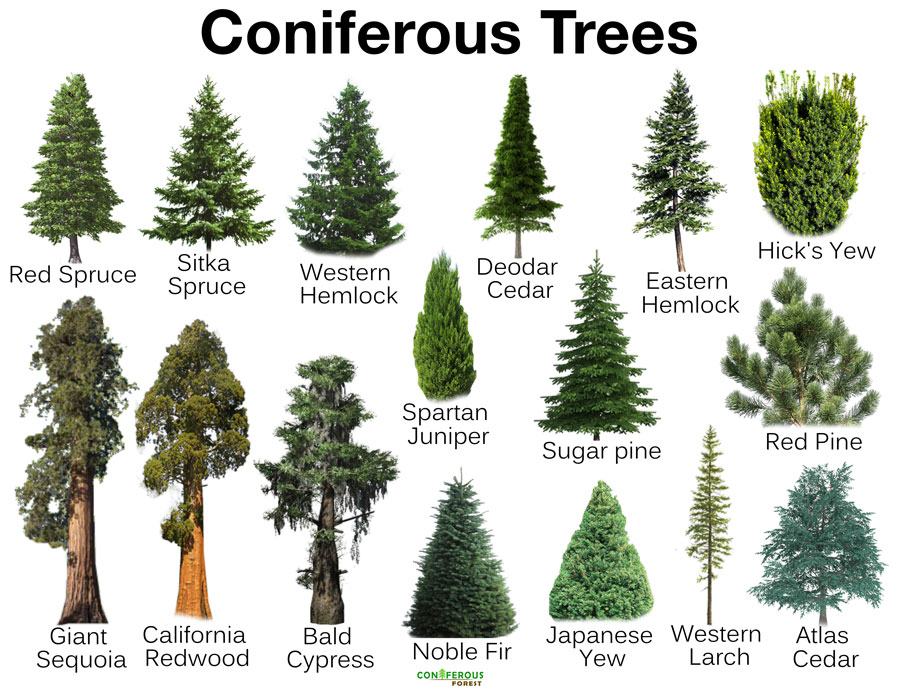Coniferous Trees
Coniferous Trees: Majestic Evergreens that Define Our Ecosystems
Step into a world dominated by towering Coniferous Trees, where the air is filled with the earthy scent of evergreen needles. These resilient trees are not just beautiful—they are the heart and soul of many of the planet’s ecosystems. From the spire-like Pines to the majestic Cypress, each tree tells a unique story of survival and strength.
Coniferous Trees Play Vital Roles in Our Ecosystems
Coniferous trees are among the most ancient and enduring plants on Earth. Known for their needle-like leaves, cones, and resilience in diverse climates, they thrive in forests ranging from snowy mountain ranges to arid, rocky landscapes. Coniferous trees, such as Spruces, Firs, and Pines, play a vital role in forest ecosystems, offering shelter to countless wildlife species and acting as natural air purifiers. Their wood has been an invaluable resource for centuries, used in everything from construction to paper-making. This page highlights the diverse species of Coniferous Trees that contribute to the ecological health of our planet.
Evergreen cone-shaped trees, growing needle- or scale-like leaves are called conifers. Most trees growing in these forest regions are cone-bearing gymnosperms, meaning their seeds are bore exposed, without any outer enclosure, in the form of cones. Although nowhere as rich as temperate forests and tropical rainforests, the conifers have adapted well to thrive in the unconventional growing conditions of the coniferous forests.
There are over 600 extant species of conifers, which are categorized into different groups depending on their foliage shape and needle type.
Ecological Importance: How Coniferous Trees Support Biodiversity
Coniferous trees are much more than just towering giants; they form the backbone of forest ecosystems, providing habitat and food for a wide range of animals. Their dense foliage and varied structure create sheltered environments for birds, mammals, insects, and fungi. These trees are especially important in colder climates, where their thick bark and needle-like leaves help them survive in freezing temperatures. Additionally, the forest floor is enriched by the fall of pine needles, creating nutrient-rich soil that supports a variety of plant species, forming a diverse and balanced ecosystem.
Economic and Cultural Value: The Lasting Legacy of Coniferous Trees
The wood of Coniferous Trees is highly valued in the timber industry for its strength, versatility, and accessibility. From Pine used in construction to Cedar for making furniture and Spruce for paper products, these trees are an essential resource in modern economies. Beyond their practical applications, Coniferous Trees have deep cultural significance in many societies. For centuries, they have been symbols of endurance and resilience, often appearing in religious ceremonies and traditions. The Cedar is sacred in many indigenous cultures, while the Pine holds a place in festive celebrations, such as the traditional Christmas tree.
Challenges Facing Coniferous Trees: Climate Change, Pests, and Habitat Loss
While Coniferous Trees are known for their resilience, they face growing challenges from climate change, pests, and habitat loss. Warmer temperatures and shifting weather patterns are causing stress on these trees, making them more susceptible to disease and pest infestations, such as the Mountain Pine Beetle. Additionally, deforestation and the clearing of forests for agriculture or urban development are causing a decline in the habitats of many coniferous species. These threats require urgent attention, as they not only affect the trees themselves but also the biodiversity that relies on them.
Conservation Efforts: Protecting the Heart of Our Forests
Efforts to conserve Coniferous Trees focus on protecting forests, reducing deforestation, and ensuring sustainable management practices. Organizations and governments are working to preserve old-growth forests, which are vital for maintaining biodiversity and carbon storage. Additionally, sustainable forestry practices, such as selective logging and reforestation, can help protect these important ecosystems. Public education and advocacy for conservation laws are also key in ensuring that future generations will continue to benefit from the ecological and economic value of Coniferous Trees.
Conclusion: The Enduring Beauty and Importance of Coniferous Trees
The Coniferous Trees are not just beautiful—they are vital components of our world’s ecosystems. Their resilience, diverse functions, and cultural significance make them irreplaceable. As we face growing environmental challenges, it is crucial that we understand the importance of these trees and take action to preserve them. With the right conservation efforts, we can ensure that Coniferous Trees continue to thrive, providing shelter, resources, and beauty for generations to come.



